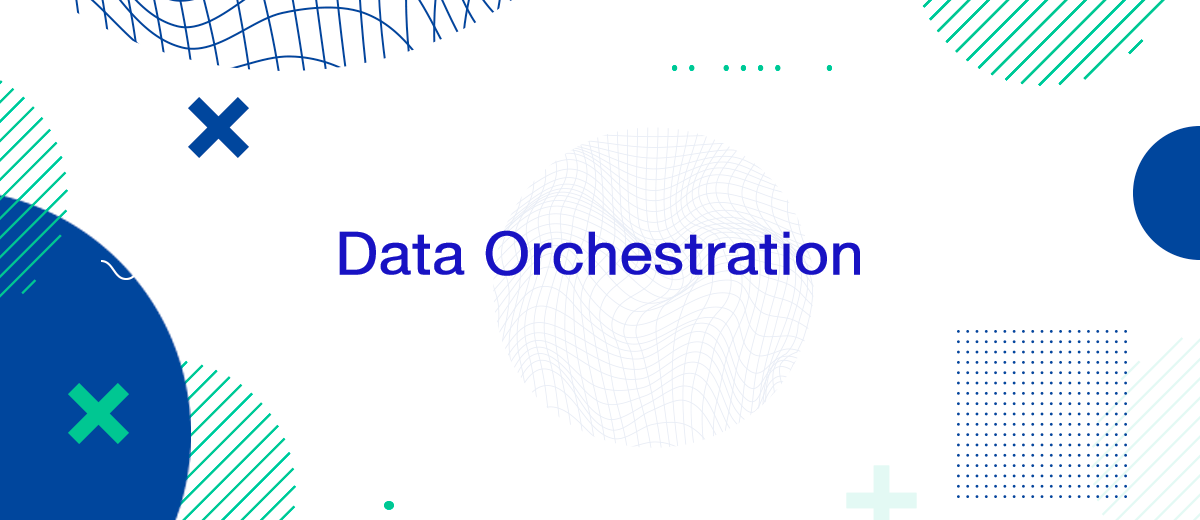Data is one of the most valuable resources in the modern world. It helps businesses make the right decisions and gain advantages over competitors. The volume of information collected is steadily growing every year, necessitating rapid and efficient processing. Therefore, orchestration technology, which allows automating the process of interacting with data, is becoming increasingly in demand. In our article, we will look at what is orchestration of data and what components it consists of. You will learn about its strategies and development trends, as well as its advantages and challenges.
Understanding Data Orchestration
Let's start with data orchestration meaning. Orchestration is the process of automatically consolidating different types of isolated data from multiple sources. Its main feature is automation through specialized software. It increases speed and productivity, and also minimizes the risk of errors due to human factors inherent in manual processing and custom scripts. An important part of this technology is the development of pipelines for transferring information from its sources to aggregated storage systems.
Orchestration involves the following processes:
- automated migration;
- filtration;
- sorting;
- organization;
- analysis;
- publication of collected information.
The complexity of these processes can range from performing single tasks to implementing continuous automated data processing over long periods of time. At the same time, the software independently monitors possible errors/failures and eliminates them. Previously, companies had to independently develop custom scripts that automated the processing of information in databases, Excel spreadsheets, or CSV files. They often had poor performance and made mistakes.
With orchestration, businesses can speed up and optimize decision-making based on the analysis of collected data and the resulting insights. Using this technology, it combines all sources of information storage into a single pool, making it available to programs for automated processing and analysis of big data. Orchestration using specialized software is ideal for companies and organizations that use multiple data storage systems. It gives you access to the information you choose, in the format you need.
Surely, you are already asking the question: what about data orchestration vs data integration? What is the difference between them? The first is responsible for monitoring and optimizing processes. It is considered a more holistic and business-oriented technology. The second provides communication and interaction between systems. This is a more detailed and technical procedure.
The Components of Data Orchestration

Now that you have already understood the concept of what does data orchestration mean, let's move on to the main components (stages) of this technology. These include:
- organization;
- transformation;
- activation.
Let's examine each of them in more detail.
Organization
The first stage of orchestration involves organizing disparate data from different sources: websites, applications, cloud platforms, CRM, social media, databases, and so on. Special funnels (pipelines) are used to collect and process them.
During the first stage, individual packets are also automatically checked for integrity and correctness. They are marked with labels and designations, and, if necessary, supplemented with new data from third-party sources. Orchestration software algorithms analyze cloud storage systems to find and organize the information you need.
Transformation
Once collected and organized, the data goes through a transformation phase. They often come in different formats. Among them, structured, unstructured, and semi-structured data are distinguished. In addition, the same data sets are often labelled differently. For example, in one system, dates are indicated in the format “January 1, 2024”, and in another, they are in the numerical format “01/01/2024”.
Such discrepancies complicate and slow down mass data processing. Therefore, at the transformation stage, they are converted and standardized, leading to a single format suitable for analysis. This data orchestration component can also solve additional tasks: data cleaning, enrichment, and normalization.
Activation
The final stage – activation – is considered the most important component of the entire process. It makes data open for everyday business use. Upon completion of all procedures, working with information should become accessible not only to specialists, but also to end users.
Activation ensures that you can use structured and relevant data on the first request without the need to download it or perform other additional operations. Activated data can be processed by external software to solve a number of problems: launching marketing campaigns, updating business intelligence indicators, and so on.
Key Strategies for Seamless Data Integration
Today, orchestration has a range of strategies. One of them is ETL. It is widely used in the IT industry and is a three-step process of extracting, transforming, and loading data into a container. Sometimes, when comparing data orchestration vs ETL, they are considered as opposing techniques, but in most cases, they effectively complement each other. Orchestration software provides the ability to automate ETL processes and steps. This minimizes the number of errors and relieves specialists from routine data processing tasks.
The following strategies are no less popular:
- Documenting data flows allows you to capture and store important information about them: sources, destinations, transformations, and dependencies. This will give you a clear understanding of the structure, purpose, and relationships of each stack.
- Visualizing workflows through graphs, diagrams, and flowcharts will help team members and all stakeholders understand data processes more easily.
- Scalable processes can more effectively cope with growing data volumes and changing business needs. Make sure your data orchestration tools can withstand increased loads.
- Modular processes are easily modified and expanded to adapt to changing requirements. Avoid monolithic workflows that are difficult to maintain.
- Flexibly, seamlessly move data across multi-cloud and hybrid environments.
- Continuous monitoring helps you identify errors, failures, or bottlenecks in your data pipelines early.
- Implementing access controls, encryption, governance policies, and audit trails ensures the security of sensitive data and protects it from leakage.
Benefits of Data Orchestration
After becoming familiar with the data orchestration definition, its components, and strategies, it's time to move on to exploring the benefits of this technology. Among its main advantages are:
- Efficiency. Process automation speeds up data processing and improves productivity. Thanks to it, companies and organizations can free up time and other resources, directing them to solve strategically important problems.
- Quality. Orchestration identifies errors and inconsistencies in data sets, making them more accurate and trustworthy. Standardization and compliance also improve the quality and reliability of information.
- Integration. Orchestration software enables you to integrate data from isolated systems and applications. This improves their accessibility and provides them with a unified view.
- Scalability. Technology users effectively scale data management processes in the face of growing volumes and complexity of information.
- Speed. The data orchestration platform organizes and optimizes data pipelines, eliminating bottlenecks and delays in the process of data movement and processing. This provides businesses with timely access to valuable insights and helps them make informed decisions faster.
- Saving. Process automation minimizes the need for manual operations. This reduces labor costs, saves time, and other resources. In addition, orchestration allows you to optimize resource allocation, reducing waste and eliminating imbalances.
- Safety. Continuous quality assurance and effective data management help reduce the risk of data breaches, compliance violations, and other security issues.
Overcoming Common Challenges in Data Orchestration
To fully understand what data orchestration is, one cannot ignore the most pressing challenges it faces today. While this technology is extremely useful for organizing disparate data and speeding up decision-making, it is not without its challenges.
Among the main disadvantages are:
- Complexity. Automating the processing of big data in different formats from various sources can be a complex and resource-intensive task. Sometimes, the process is complicated by the need to implement and configure new tools that require special skills, experience, and additional resources.
- Compatibility. Another challenge is integrating orchestration tools with separate data stores. Choosing managed cloud solutions can help overcome this challenge. They are easy to scale and integrate with third-party software.
- Quality. Automating data processing can have a negative impact on their quality. End-to-end monitoring will ensure timely control of the integrity and reliability of information in real-time.
- Confidentiality. Orchestration of data involves the movement and processing of data across multiple applications and systems, posing a potential threat to privacy. To address these risks, companies, and organizations must take adequate measures to protect information from unauthorized access and leaks.
- Delays. Another significant drawback of the technology is processing delays, which often occur when working with large amounts of information. Solving this problem will positively impact the timeliness and relevance of data analysis.
Future Trends in Data Orchestration
The technologies mentioned in the article have been actively spreading in recent years. The impetus for this was the growing demand for automation and optimization of data management in many industries. The orchestration market is expected to continue to grow in the near future. This forecast is due to an increase in the volume and complexity of data, as well as business requests for accelerated processing of information in real time.
Data orchestration platforms will be intensively improved thanks to the introduction of artificial intelligence (AI) and machine learning (ML) algorithms into these processes. According to experts, data orchestration will become more popular in areas such as retail, telecommunications, finance, and healthcare. The steadily growing volumes of data here require unified automated solutions for their processing and analysis. This will improve the productivity of all market participants, improve the quality of customer service, and ensure compliance with regulatory requirements.
Another expected trend in this direction is the emergence of new participants and the consolidation of existing ones through mergers and acquisitions. Today, the main players in the data orchestration market include Microsoft, IBM, SAP, Oracle, Talend, Cloudera, Matic, Zaloni, Google, and AWS.
Conclusion
Data orchestration is a highly useful and promising process. It aids businesses in effectively managing data, making faster and better decisions, and achieving their goals. Through its utilization, enterprises and organizations can automatically gather, process, and analyze information from various sources and in different formats. Software orchestration tools empower them to adapt swiftly and seamlessly to the increasing volumes of data. By timely investing in this technology, businesses can derive maximum benefits from their data sets, efficiently implement innovations, and maintain competitiveness in the long run.
You probably know that the speed of leads processing directly affects the conversion and customer loyalty. Do you want to receive real-time information about new orders from Facebook and Instagram in order to respond to them as quickly as possible? Use the SaveMyLeads online connector. Link your Facebook advertising account to the messenger so that employees receive notifications about new leads. Create an integration with the SMS service so that a welcome message is sent to each new customer. Adding leads to a CRM system, contacts to mailing lists, tasks to project management programs – all this and much more can be automated using SaveMyLeads. Set up integrations, get rid of routine operations and focus on the really important tasks.
